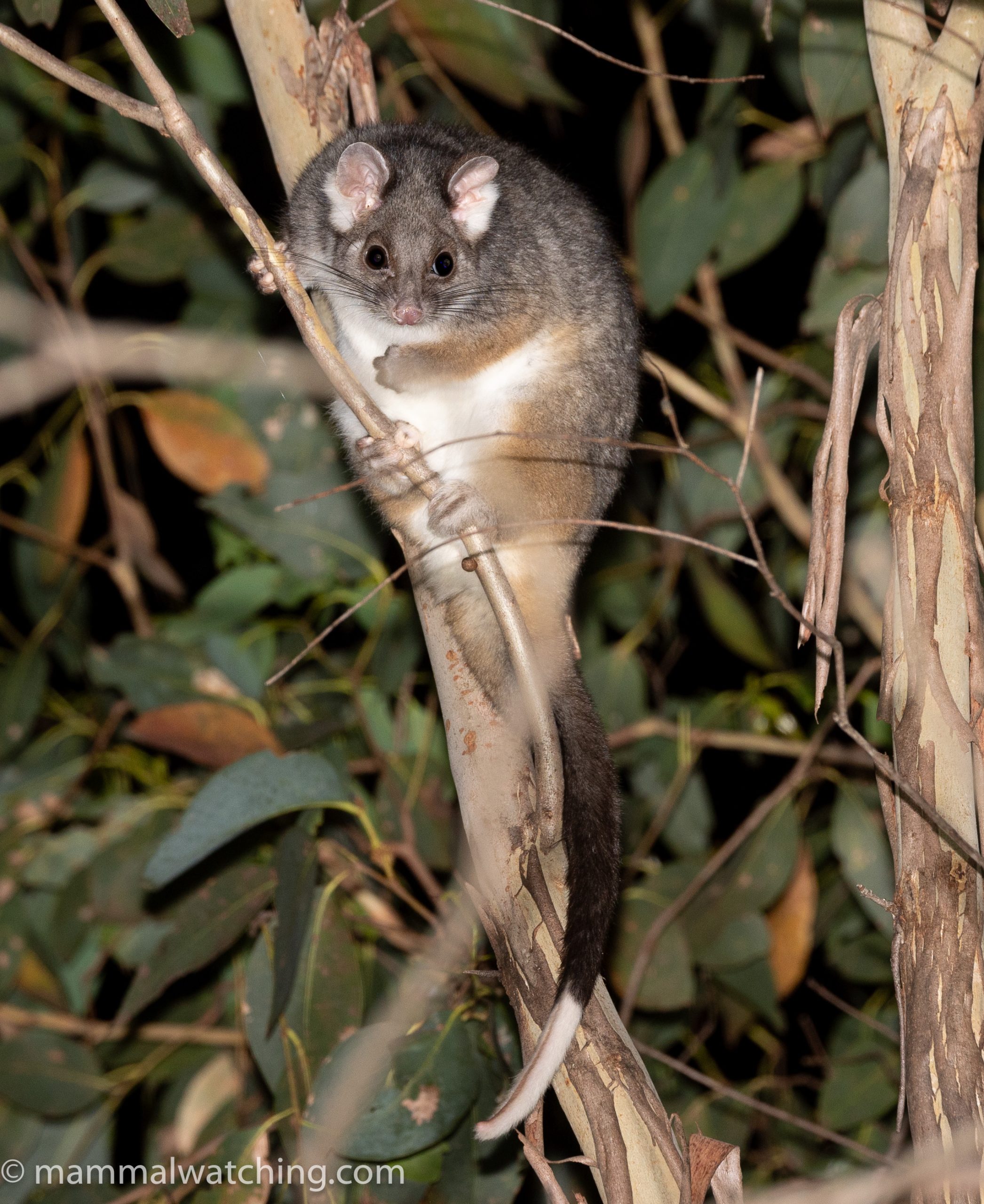
Two nights mammalwatching in Australia: The Victorian Alps and Sydney
I was in Australia over Christmas and snuck in a couple of nights mammalwatching to search for Australia’s two feathertail glider species and a Long-footed Potoroo.
Long-footed Potoroos are Australia’s other potoroo species and much rarer than their long-nosed cousins. The potoroos, along with the two (recently split) feathertail glider species – the broad-toed and narrow-toed – are the only native land mammals in SE Australia that I haven’t seen. I wanted to remedy this.
I was also keen to meet up with John Rogers, a Sydneysider, a birder but an increasingly keen mammalwatcher: John was in West Papua not long before us and is coming to Bolivia with me later this year. John also wanted to look for the potoroo so I contacted Tim Bawden – one of the Australian mammalwatching illuminati – for his advice. And before we could say “Potorous longipes” a trip was on the cards. Tim knew a site for the potoroos in the Victorian highlands and offered to come up for the night from Melbourne with Rohan Clark (Australian bird and mammal guru and for a long time the only other mammalwatcher I had ever met) to help us search. John and Tim were also kind enough to rustle up a bunch of camping gear for me and my kids: we had flown into Sydney the night before our expedition and had nothing.
The Victorian Alps
It took about 8 hours driving from Sydney to reach the potoroo location. Eight hours is, in Australian terms, not very far. But after 5 hours’ sleep and a 21 hour time change from Hawaii it seemed quite a long way to me. But the happiness of being back in Australia kept me going.
Tim and Rohan had arranged to meet us in the small town of Porepunkah near Bright. We failed to read their message properly and headed off to the coordinates they had also shared for our campsite. Our second mistake was trusting Google maps to get us there. Long story short we took a much longer and rougher track than we should have and ended up calling Tim from the top of a mountain and a road closed sign. If we hadn’t have had cell reception I think we might still be up there. This was completely my fault. But I prefer to blame my kids. So let’s just say it was their fault.
Thankfully Tim and Rohan found us 30 minutes later and showed us the ‘easy’ road to get to the campsite. It would have been OK in a 2WD … even better in a rental 2WD.
We walked along the road (near here) with our thermal scopes for a couple of hours after sunset, set up camp and ate, and then went out again.
Tim and Rohan had both seen the Long-footed Potoroos here but we were not lucky. But we did have a very productive few hours, clocking up 10 species. I was reminded how much of a game changer thermal scopes are in Australia in particular: I must have spent somewhere between 1000 and 1500 hours spotlighting for mammals in Australia. The only pygmy possums I ever saw were in nest boxes and coming out of researcher’s traps. And I had seen one feathertail glider once (back then there was only one species) floating out of a tree like a falling leaf. In the first two hours spotting here we saw three Narrow-toed Feathertail Gliders and two Eastern Pygmy Possums!
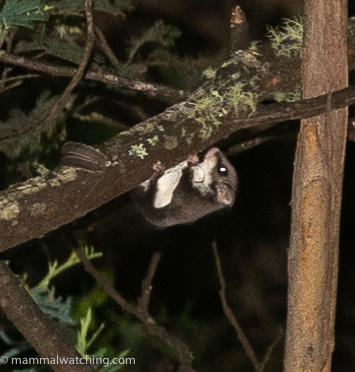
Narrow-toed Feather-tailed Glider (Acrobates pygmaeus)
There are now two feather tail glider species in Australia and people are still figuring out where they overlap. Only one species – the Broad-toed – occurs in Queensland, but in the southeast you get the Narrow-toed as well. This is a useful page on how to tell them apart. Rohan and Tim seemed pretty confident the animals we saw were all Narrow-toed Feathertail Gliders and our pictures fit well with the characteristics in the field guide including the pale tips to the fringe of fur along the tail.
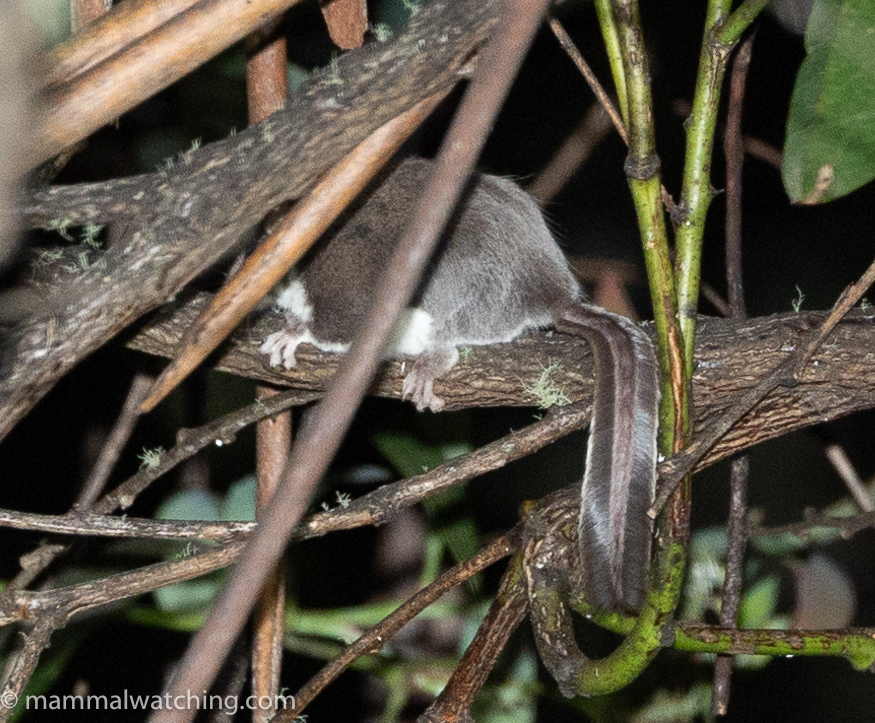
Narrow-toed Feather-tailed Glider (Acrobates pygmaeus)
We saw a couple of Eastern Pygmy Possums and this Ringtail Possum.
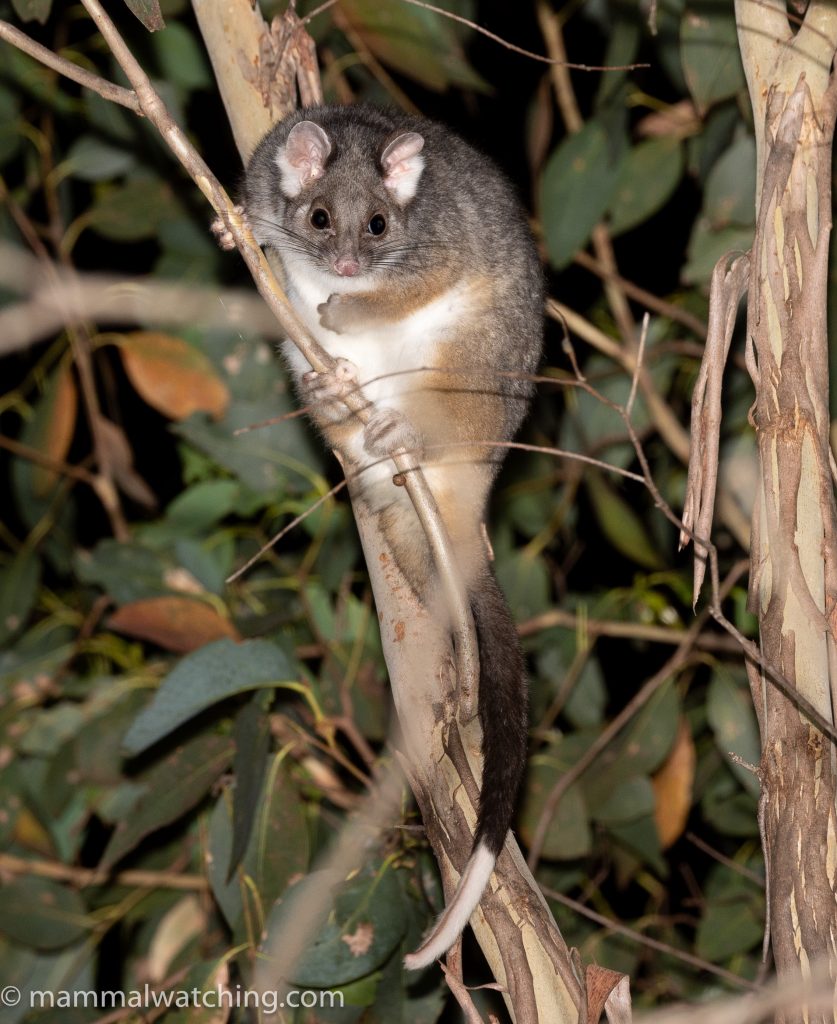
Eastern Ring-tailed Possum (Pseudocheirus peregrinus)
As well as several Mountain Brushtail Possums and a Swamp Wallaby.
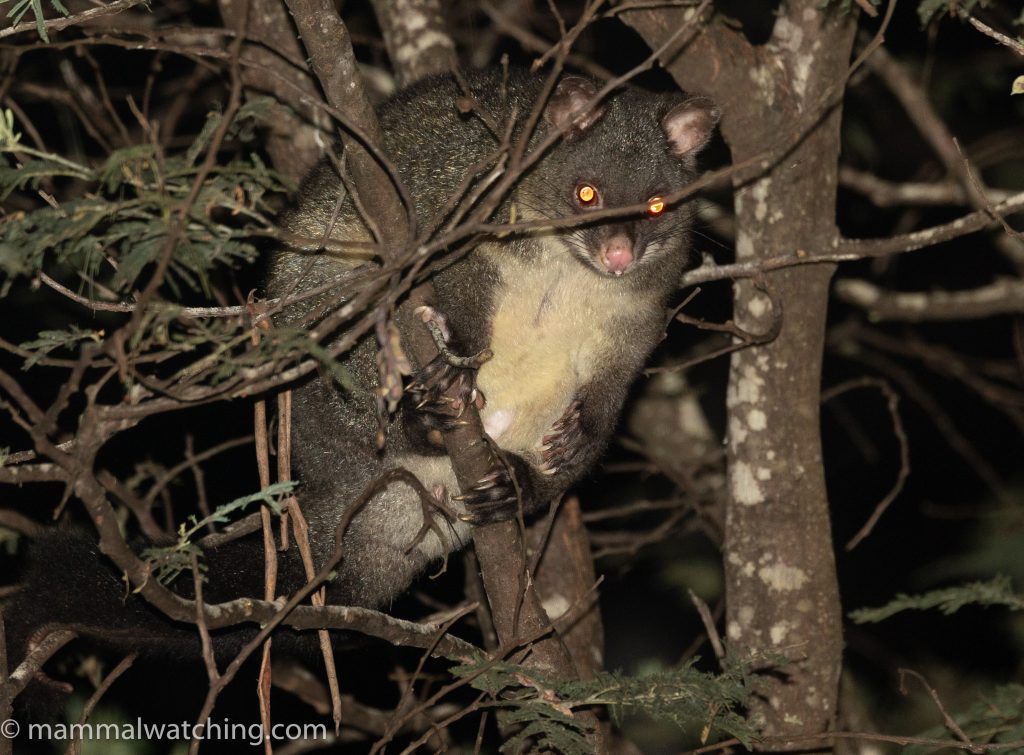
Mountain Brush-tailed Possum (Trichosurus cunninghami)
We heard Krefft’s (formerly Sugar) Gliders, and had good but distant views of Southern Greater Gliders and Yellow-bellied Gliders.
We saw a Bush Rat – a common animal but an uncommon sighting – as well as this Agile Antechinus running in and out of a hole in the bank above the road.
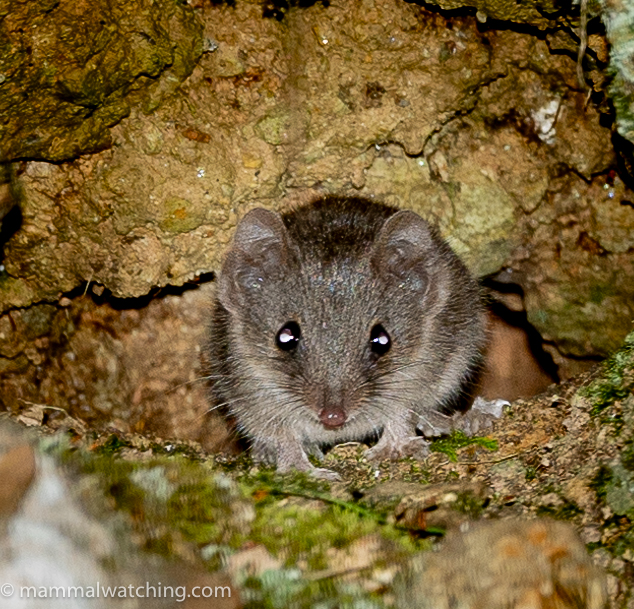
Agile Antechinus (Antechinus agilis)
What a great night! And the dawn chorus the next morning was stupendous. Yet another reason to love Australia that I’d forgotten about.
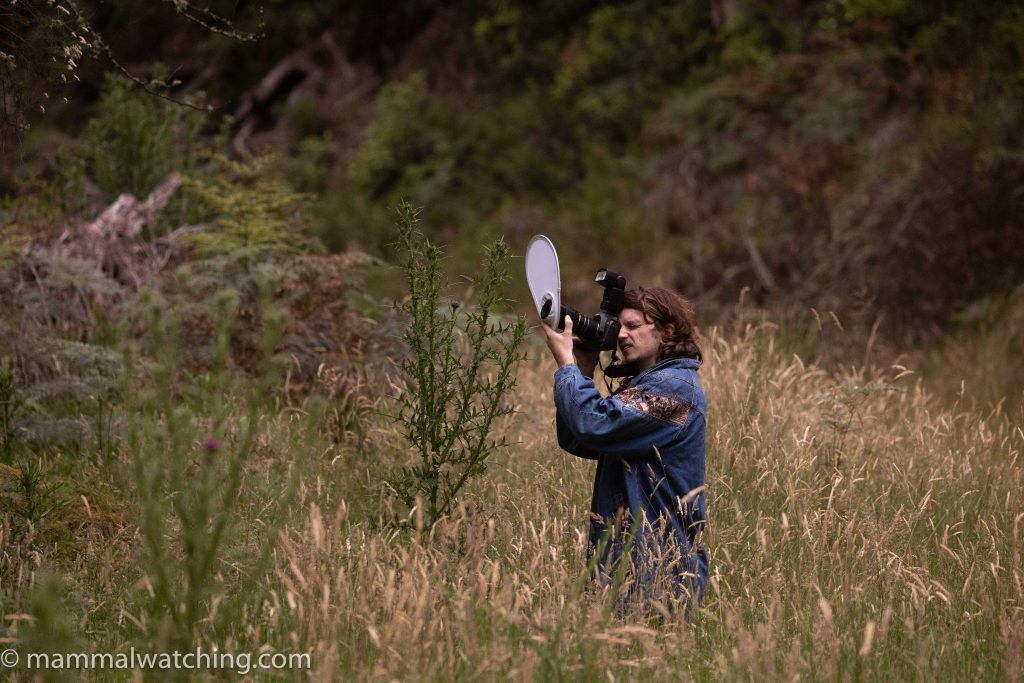
Patrick photographing insects. Yes, he is disappointing.
Agile Antechinus (Antechinus agilis)
Swamp Wallaby (Wallabia bicolor)
Narrow-toed Feather-tailed Glider (Acrobates pygmaeus)
Yellow-bellied Glider (Petaurus australis)
Southern Greater Glider (Petauroides volans)
Krefft’s Glider (Petaurus notatus) (heard)
Eastern Ring-tailed Possum (Pseudocheirus peregrinus)
Eastern Pygmy Possum (Cercartetus nana)
Mountain Brush-tailed Possum (Trichosurus cunninghami)
Australian Bush Rat (Rattus fuscipes)
Thanks again to Rohan and Tim for showing us around and providing camping food and gear and to John for coming along with even more food!
Kur-ring-gai Chase National Park, Sydney
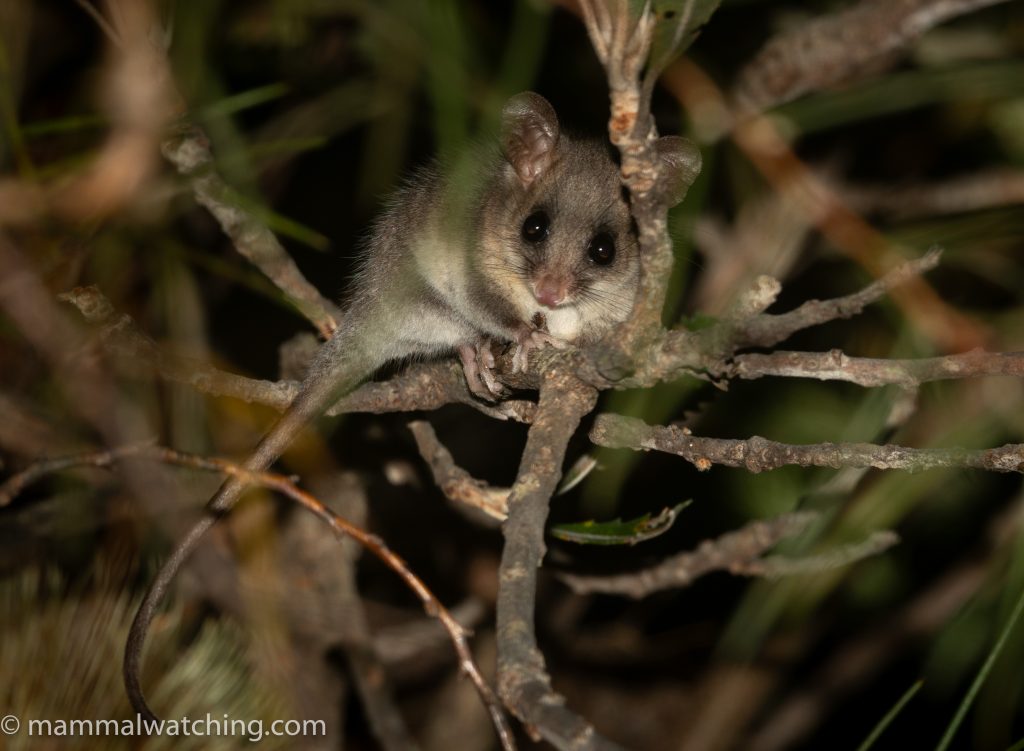
Eastern Pygmy Possum (Cercartetus nana)
I was back in Sydney after Christmas for a few days and wondered whether I could track down the other – Broad-toed – Feathertail Glider while I was in town. Joshua Bergmark recommended I try Kur-Ring-Gai Chase National Park. Feathertails were common here he said and only the broad-toed flavour had been recorded in the park.
Patrick and I drove over there for a couple of hours. At Joshua’s suggestion we parked here and explored the small bush picnic site in front of the parking area, and walked up the road past the park entrance booth. In among the flowering banksia my thermal scope found several Eastern Pygmy Possums and a few other small mammals that might have been feathertails but were too light-shy to get a proper look at.I finally got onto this Broad-toed Feathertail Glider that obligingly posed for photos while feeding in the picnic area in front of the car.
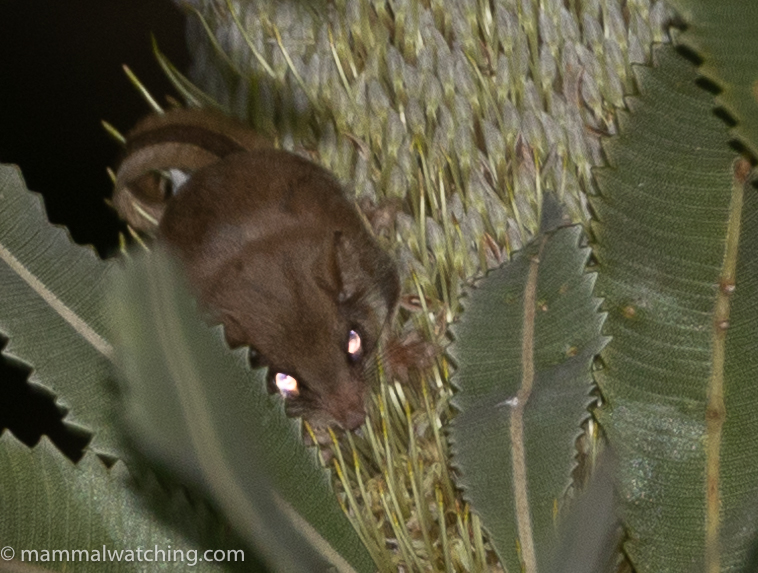
Broad-toed Feather-tailed Glider (Acrobates frontalis)
Post author
1 Comment
Leave a Reply
You must be logged in to post a comment.


Najade
I think you might have gotten your potoroos mixed up: long-nosed (Potorous tridactylus) is the common one, long-footed (Potorous longipes) the difficult one.